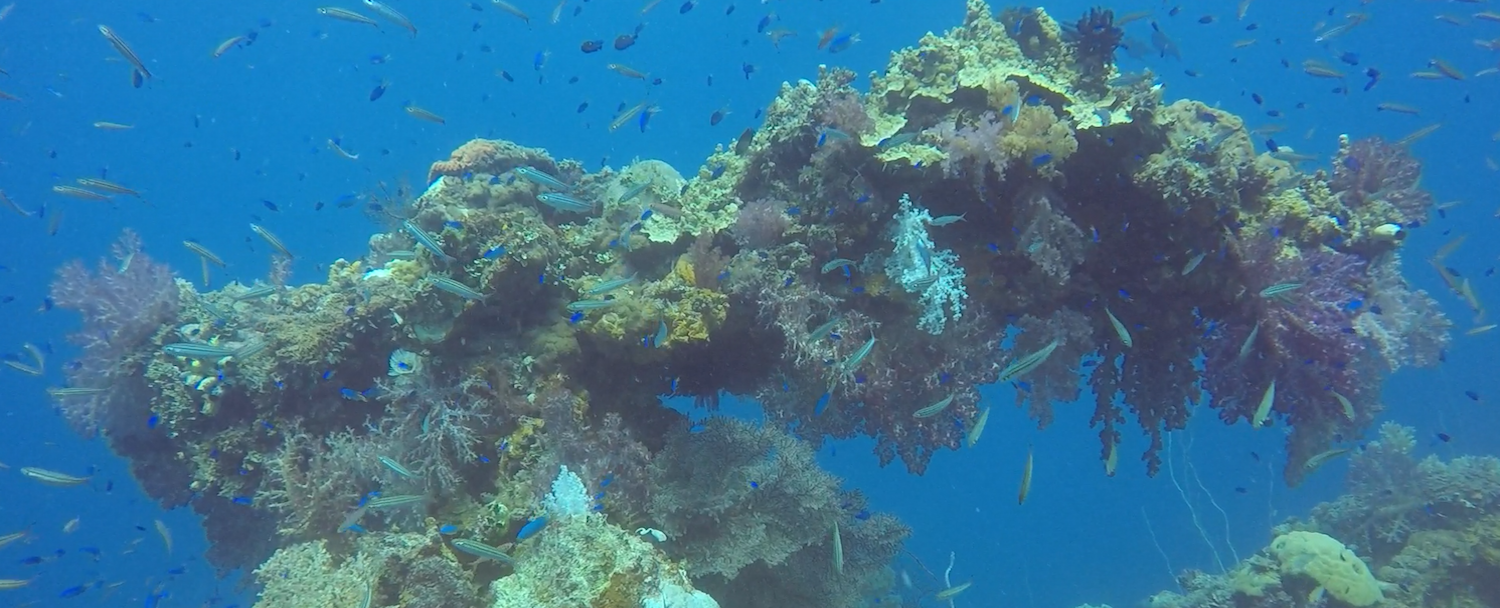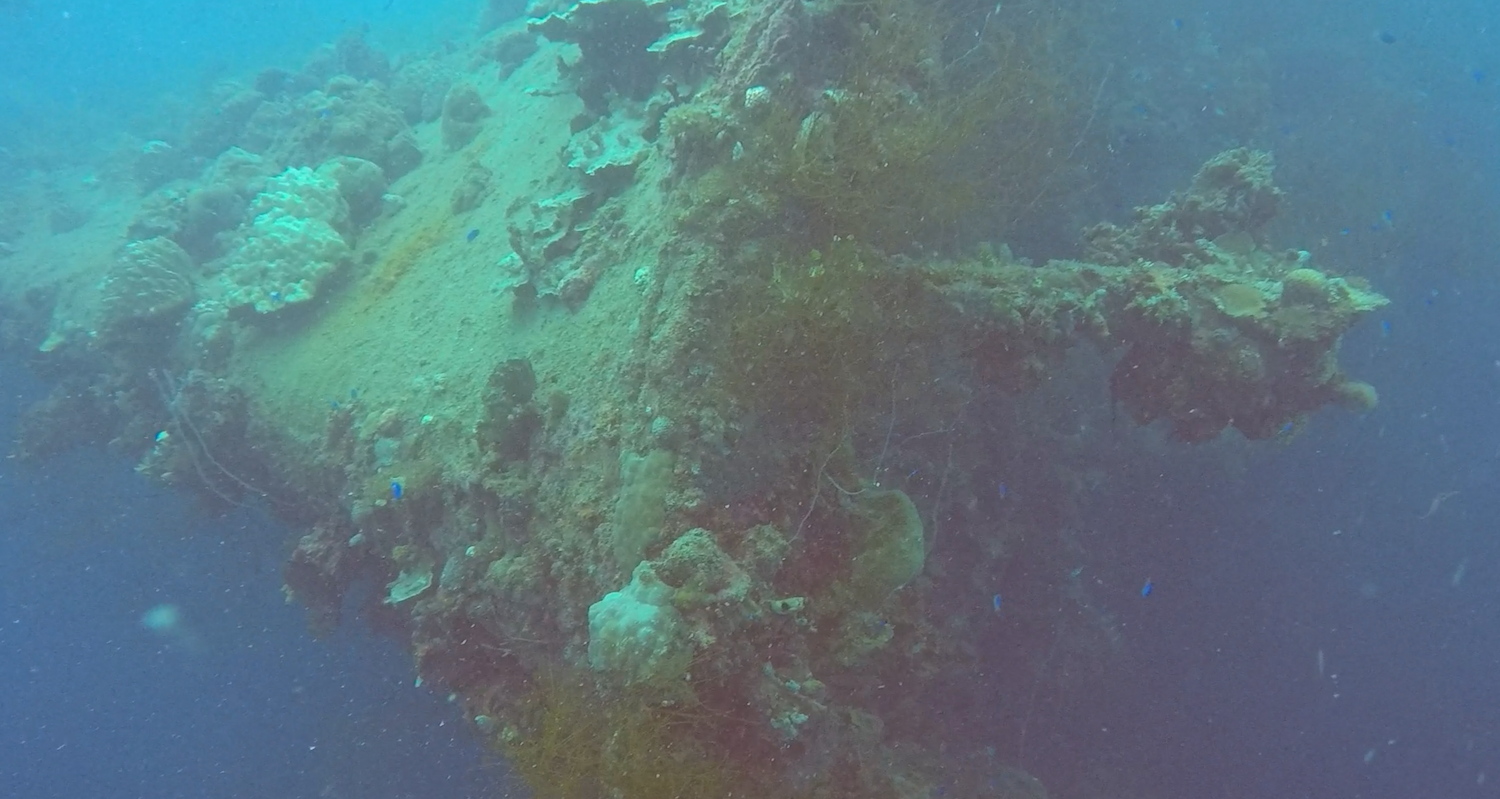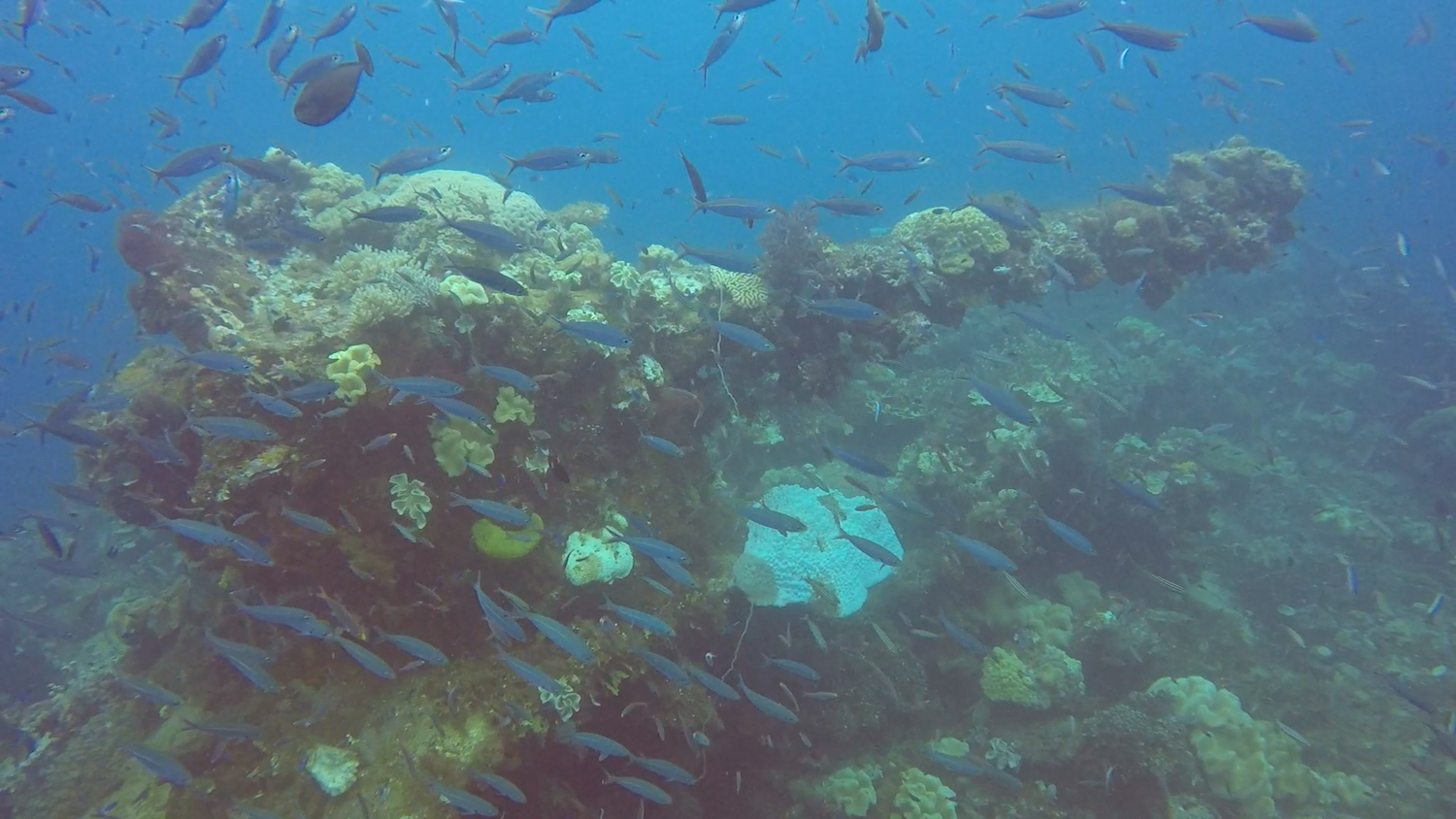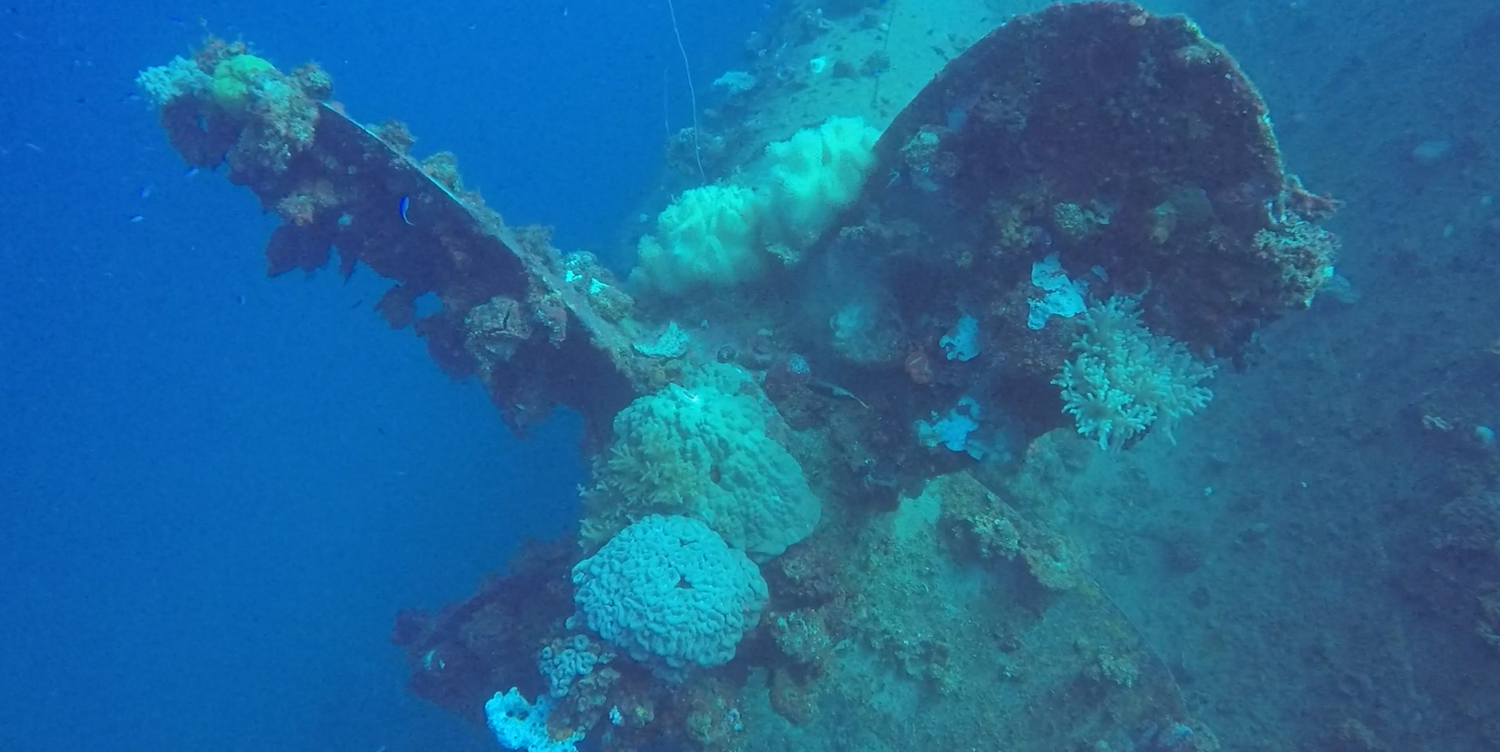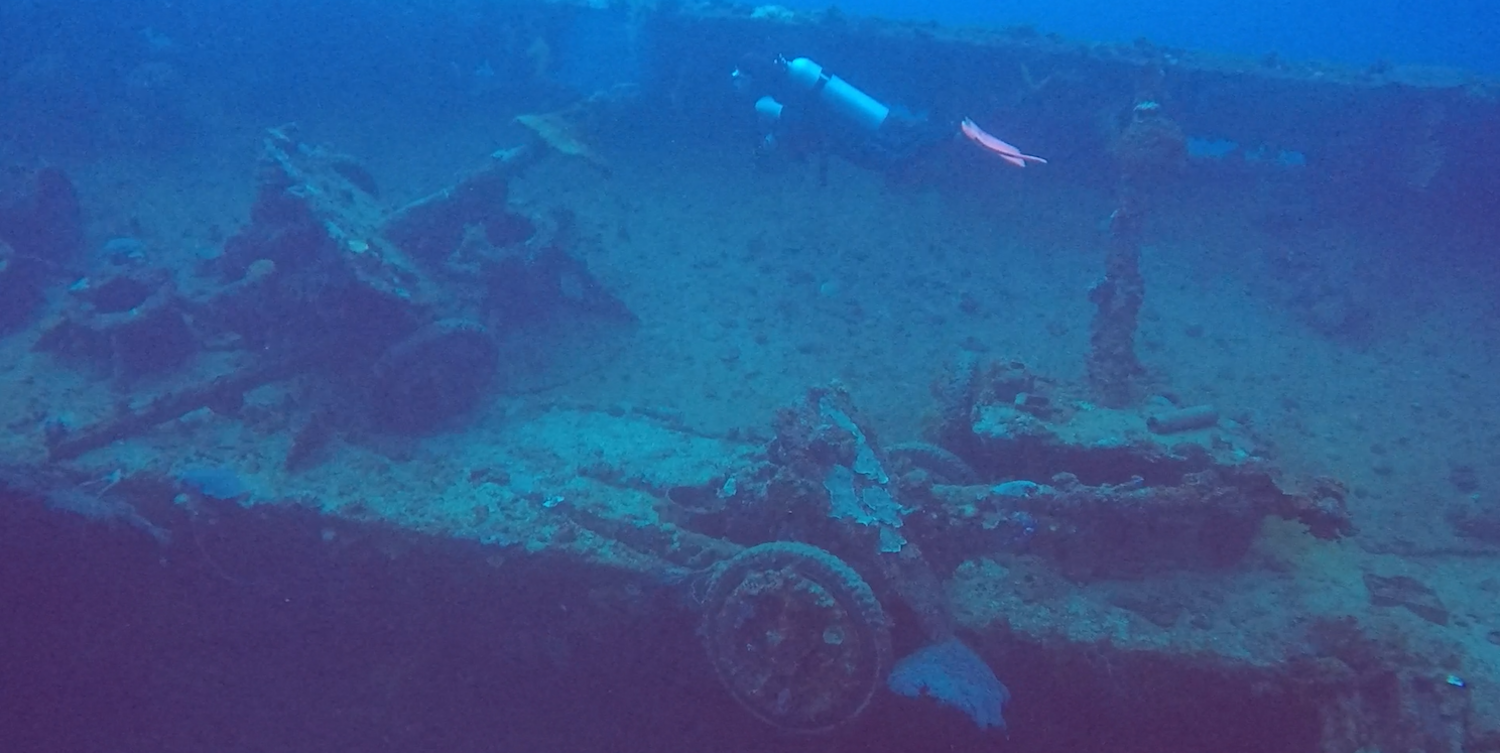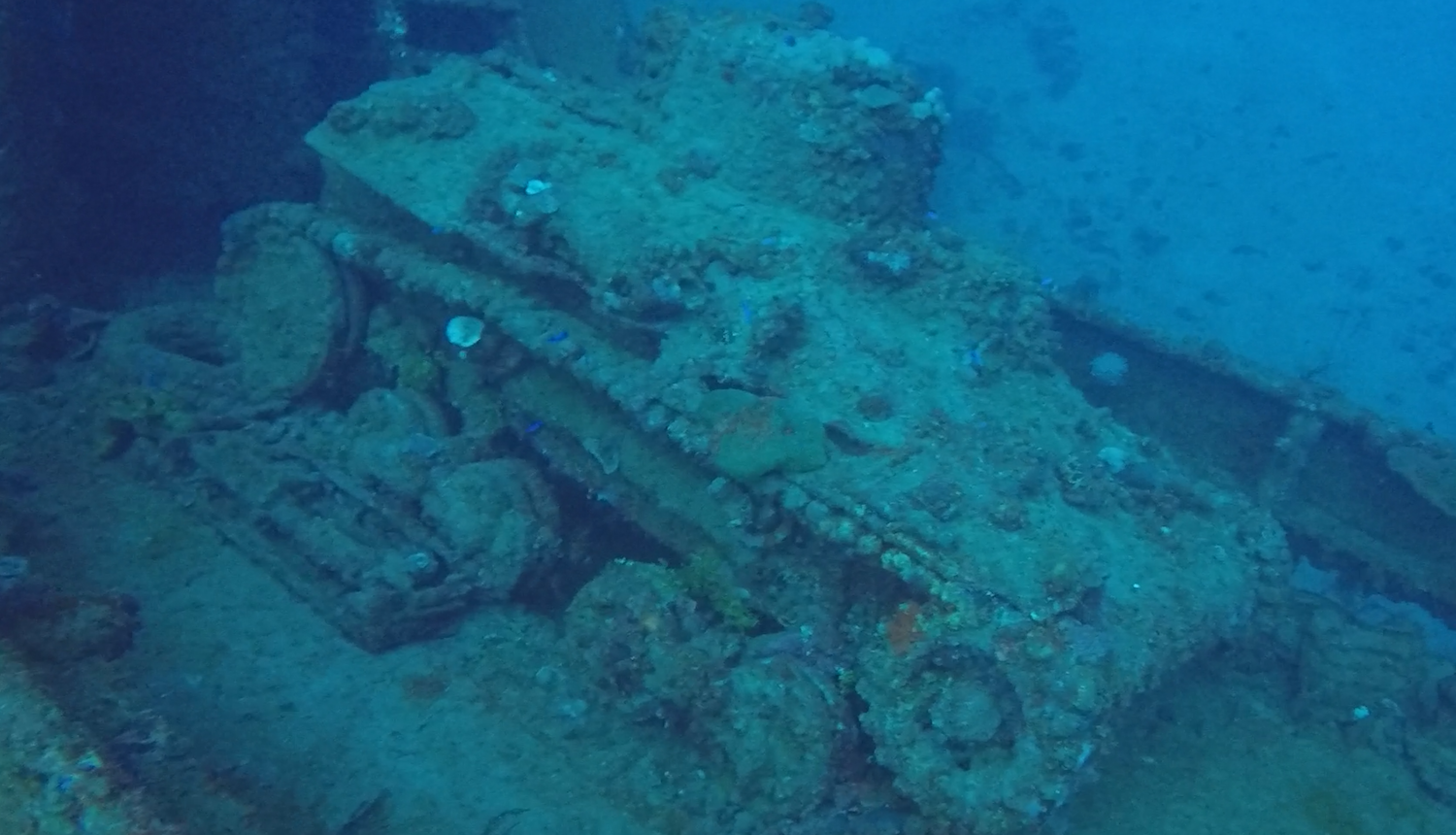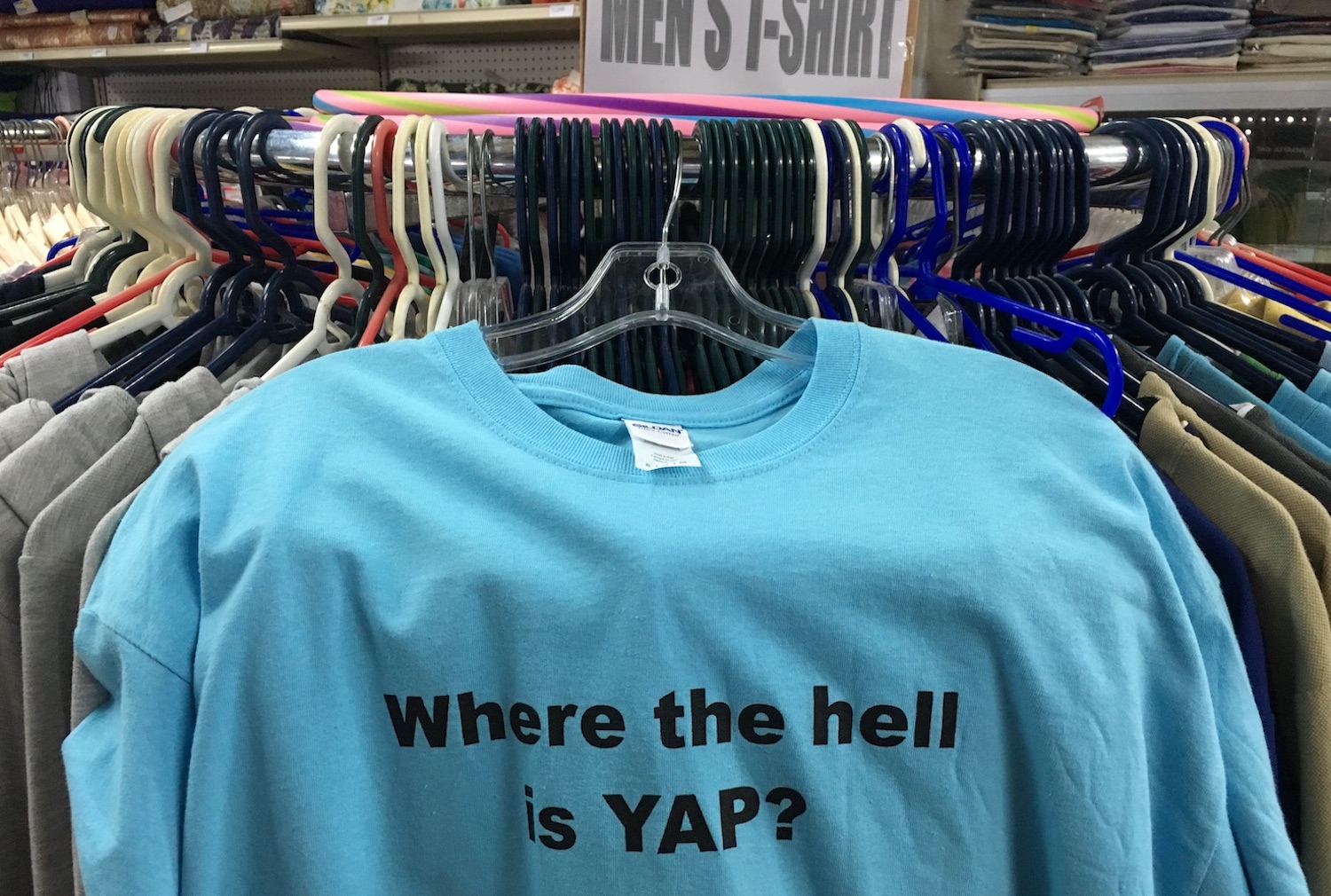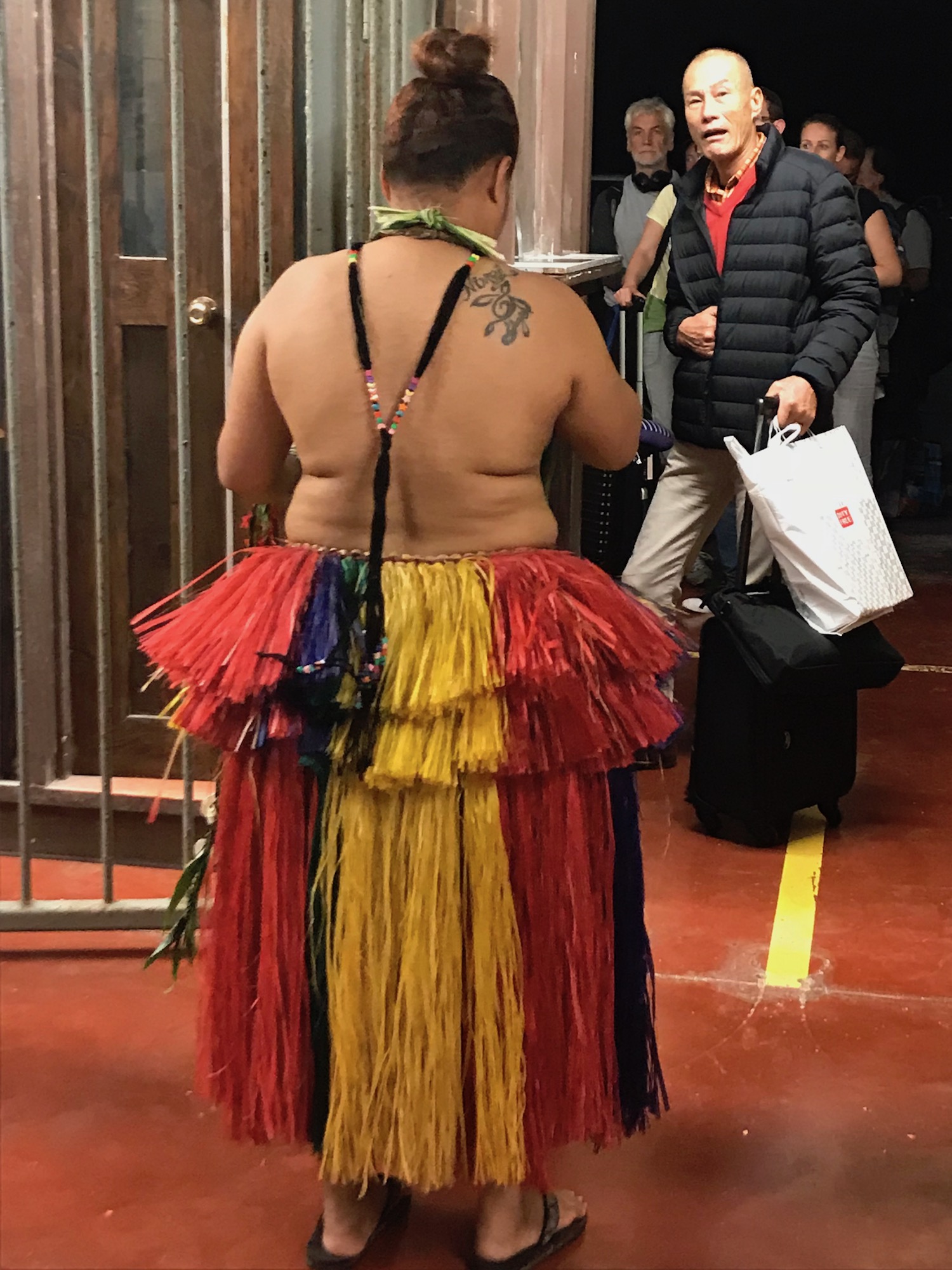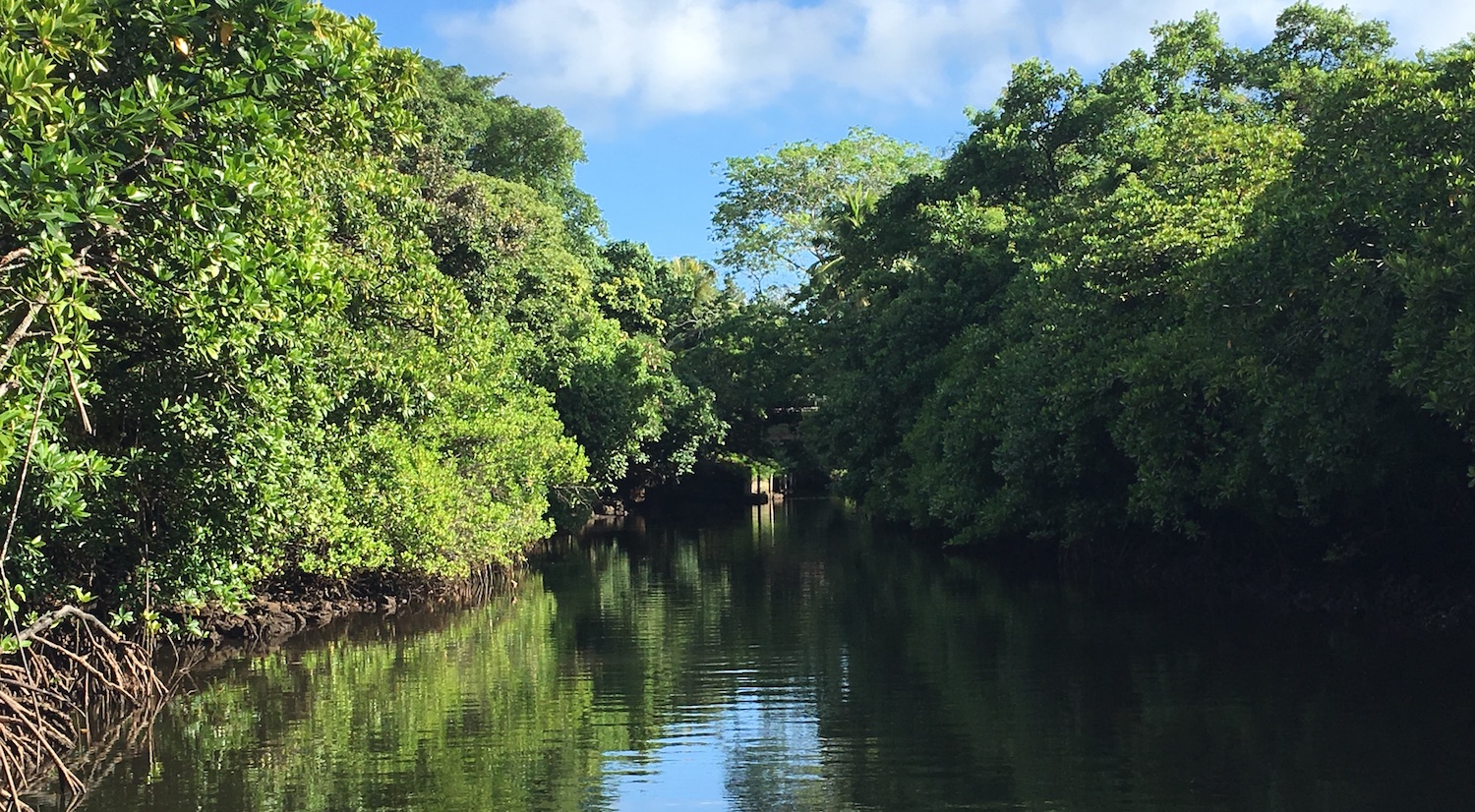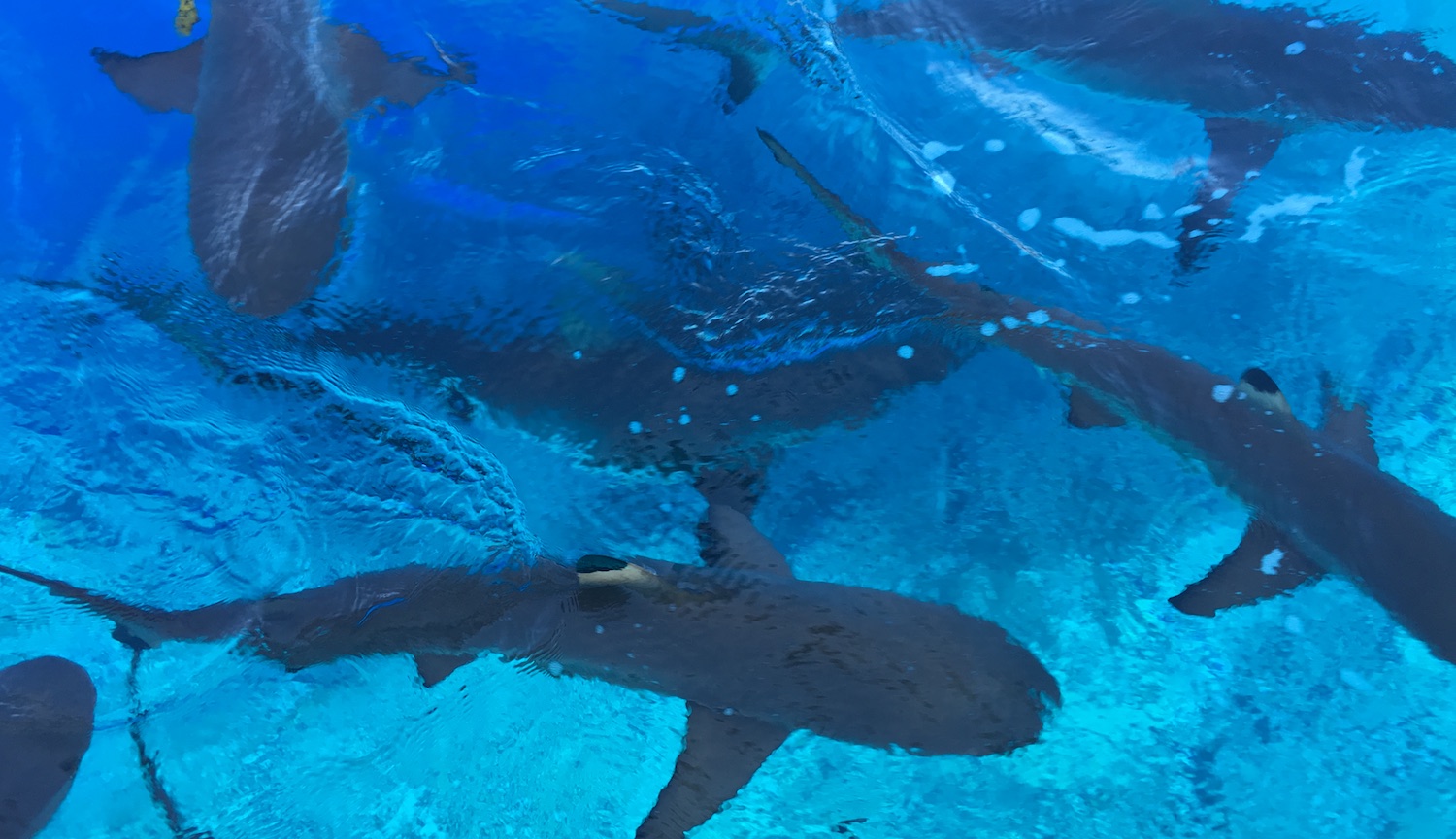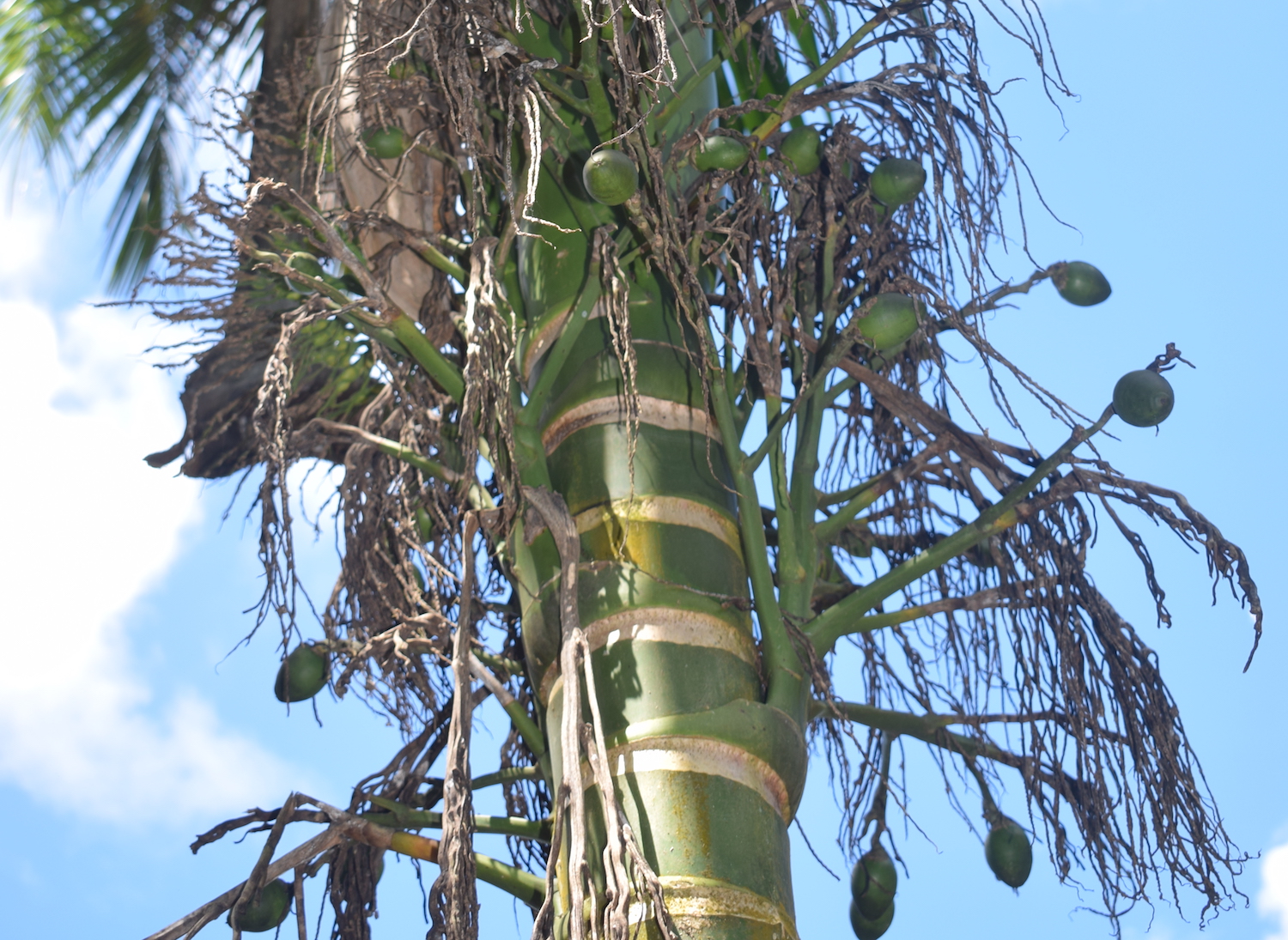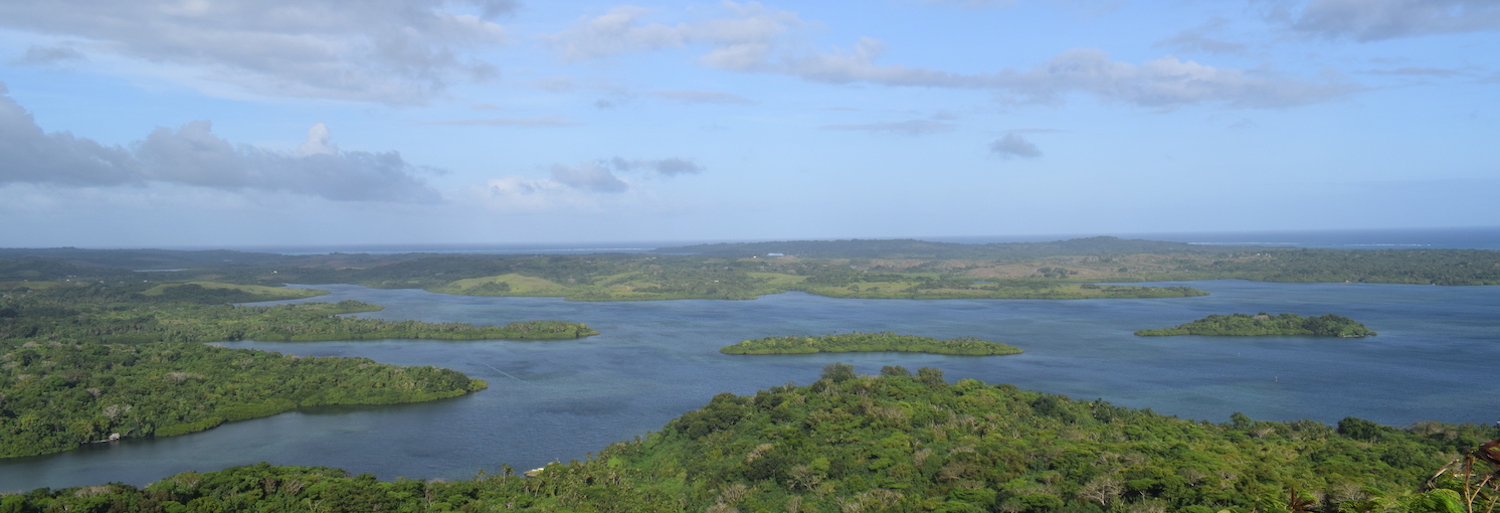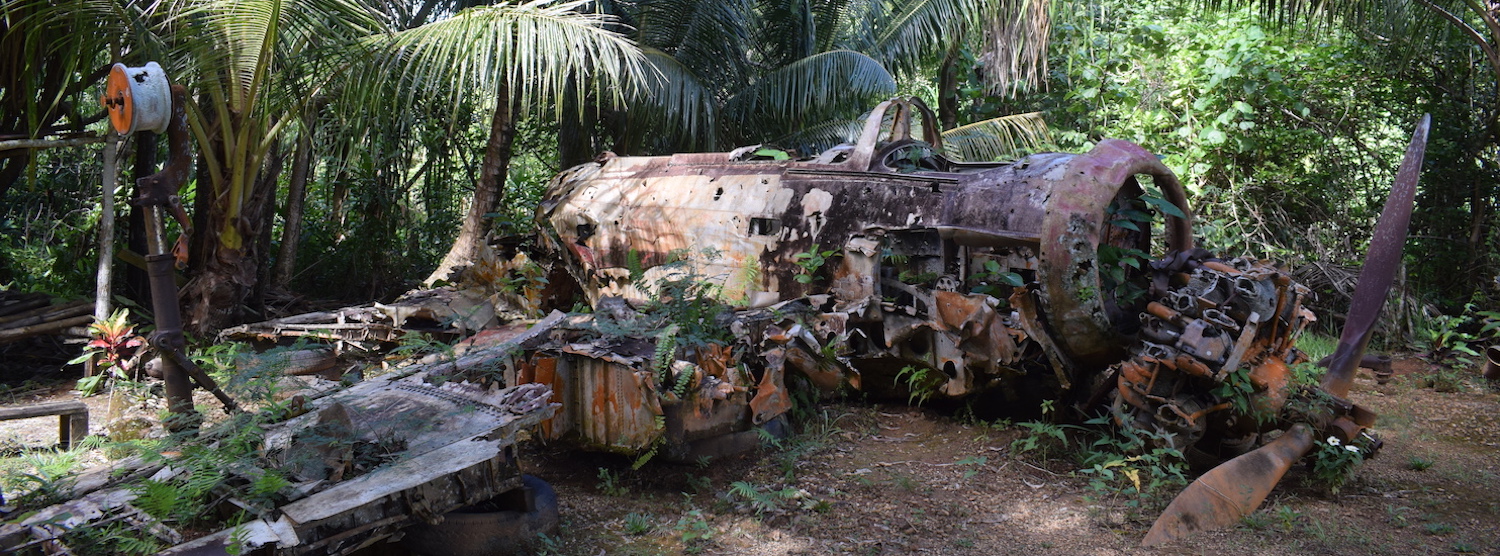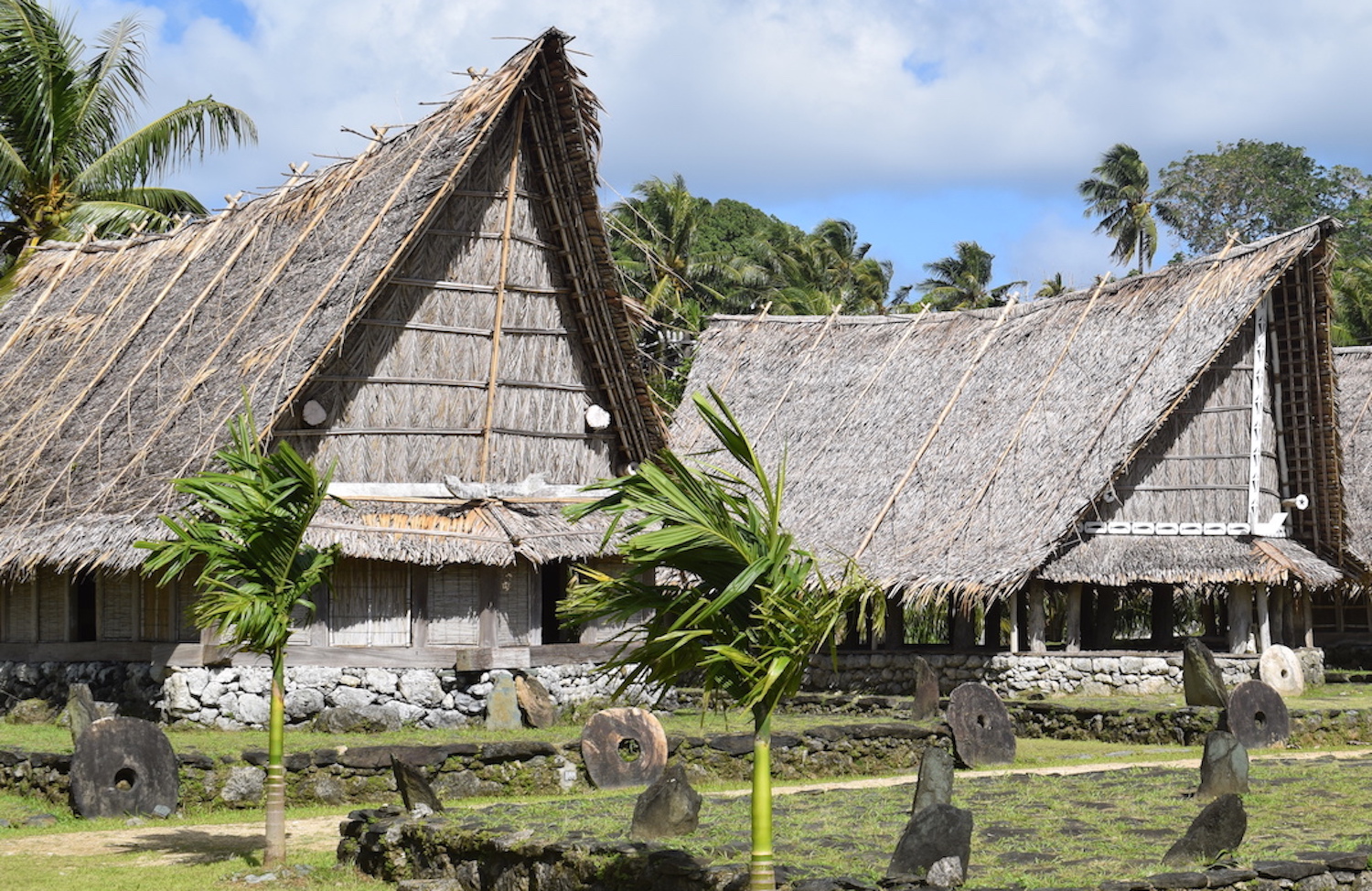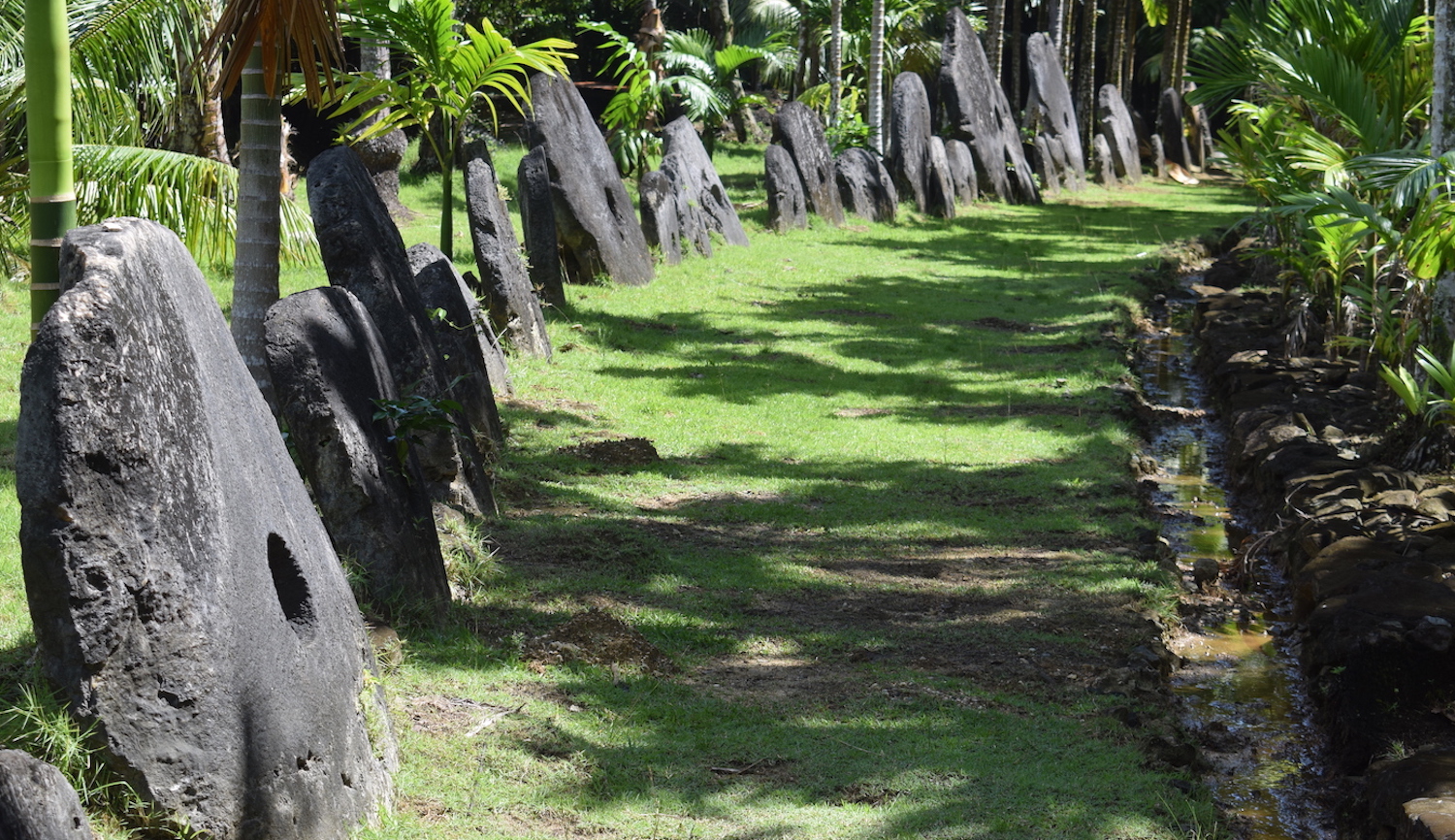The Federated States of Micronesia, straddling the Micronesian region of the Pacific Ocean, is an arbitrary political construct of four distinct parts each with different cultures. Kosrae is a small island state to the east, strictly Christian, home of the ancient stone city of Lelu. Pohnpei is both a verdant island and a state of eight surrounding atolls; it is host of Palikir, the capital of the FSM, and Nan Madol, the most important archaeological site in Micronesia. Chuuk state has the highest population, with just 50,000, mostly around Truk Lagoon, a large archipelago of achingly beautiful hilly islands in the middle of a circular barrier reef, which is understandably advertised as the greatest dive site in the world for shipwrecks. And Yap, westernmost, is one of the remotest collection of islands and atolls on the planet, prized for diving with manta rays though many of its outer islands are visited only by anthropologists, missionaries and NGOs.
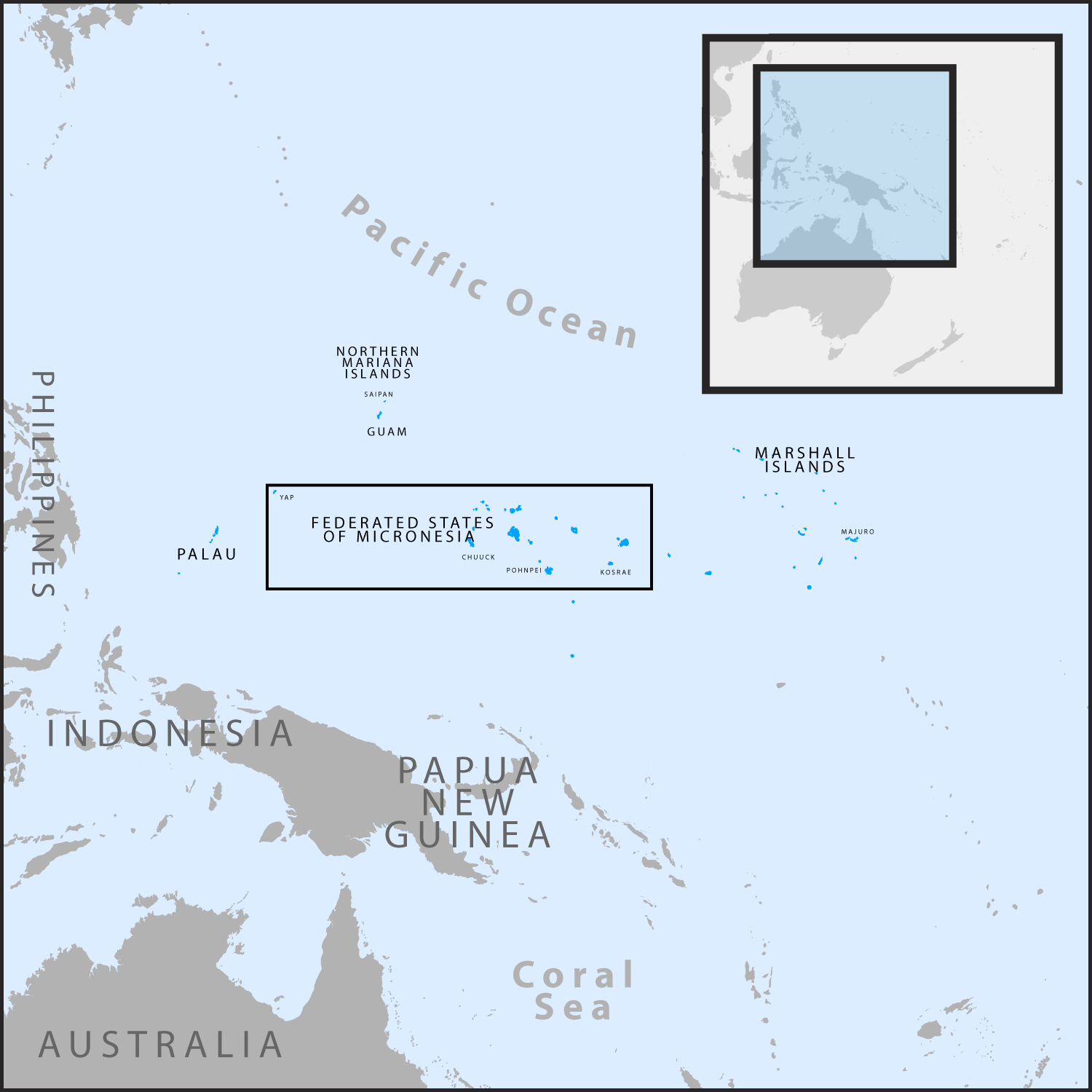
The FSM is spread so far and wide – it is at least an hour on the plane between each state – and its attractions are so great, you will be rewarded for spending as much time here as you possibly can.
Kosrae
Because a United Airlines round-the-world ticket forbids more than three stop-overs in any one country, we did not get off at Kosrae, even though Flight 154 lands here after the Republic of the Marshall Islands, less than a couple of hours away. Sit on the right for the best views.
We were travelling over Christmas and learned that at that time not only would we be unable to drink alcohol, as that is illegal, or eat out, as the restaurants have to close, but we would not be able to dive either, as the diving centres have to shut too. Such is the strength of fanatical Christian influence.
So it is with great regret that this time we did not visit Lelu, the small island connected by a causeway to Kosrae on the east coast, where there are the ruins of a royal walled city dating back to the fourteenth century.
Pohnpei
Pohnpei is one of the wettest places on earth, with an average rainfall of 5 metres on the coast and 7.5m in the interior. While it is always raining somewhere here, it is stereotypically tropical, with torrential bursts for a few minutes before an outbreak of bright sunshine. Unusual in Micronesia, Pohnpei’s volcano has not yet sunk back into the sea, leaving a forest-covered peak, which is permanently shrouded in cloud, ringed in concentric circles by a mangrove coast and a coral reef. You get excellent views of this Garden Island from the right hand side of UA154 as you come in to land.

The airport is just five minutes from Kolonia on the north coast. This is by far the largest town, with 6,000 people, and in reality there are just half a dozen streets laid out in a small grid, with several supermarkets and the KFC (Kolonia Fried Chicken) and that’s about it. Just out of town is a three screen cinema that will show the latest Hollywood blockbusters as long as at least four people want to watch them.
On the west of town is Mangrove Bay, where yachts are moored in the harbour. Down the hill at the end of the driveway is the Mangrove Bay Hotel with a wonderful bar and sushi restaurant on the decking. Also here is the Surf Club, the best place to arrange surfing and diving. The waves behind the reef are so powerful they often form the famous pipe effect. Just set back up the hill is the Ocean View Plaza Hotel where the terrace restaurant has great views all around. Another decent place to stay is the 7 Stars Inn south of town.
Christian rites forbid the sale of alcohol on Sundays and even New Year’s Day. No matter. Locals drink sakau, a version of the non-alcoholic but narcotic beverage kava that can be found across Micronesia. It is derived from the roots of a plant in the black pepper family, a chocolate-coloured sludge that tastes rather muddy, sends your lips and tongue numb, and leaves you feeling chilled like you have just had a spliff, making the friendly kaselehlie welcome even warmer. You buy it in re-purposed plastic water bottles at $3 for 500ml (locals drink three or four a night, but one will be enough to give first timers a good buzz). You can get it from street hawkers lugging cooler boxes or straight from the major supplier in the shack next to the Discount Store at the bottom of Kaselehlie Street opposite the junction to Ohmine Street.
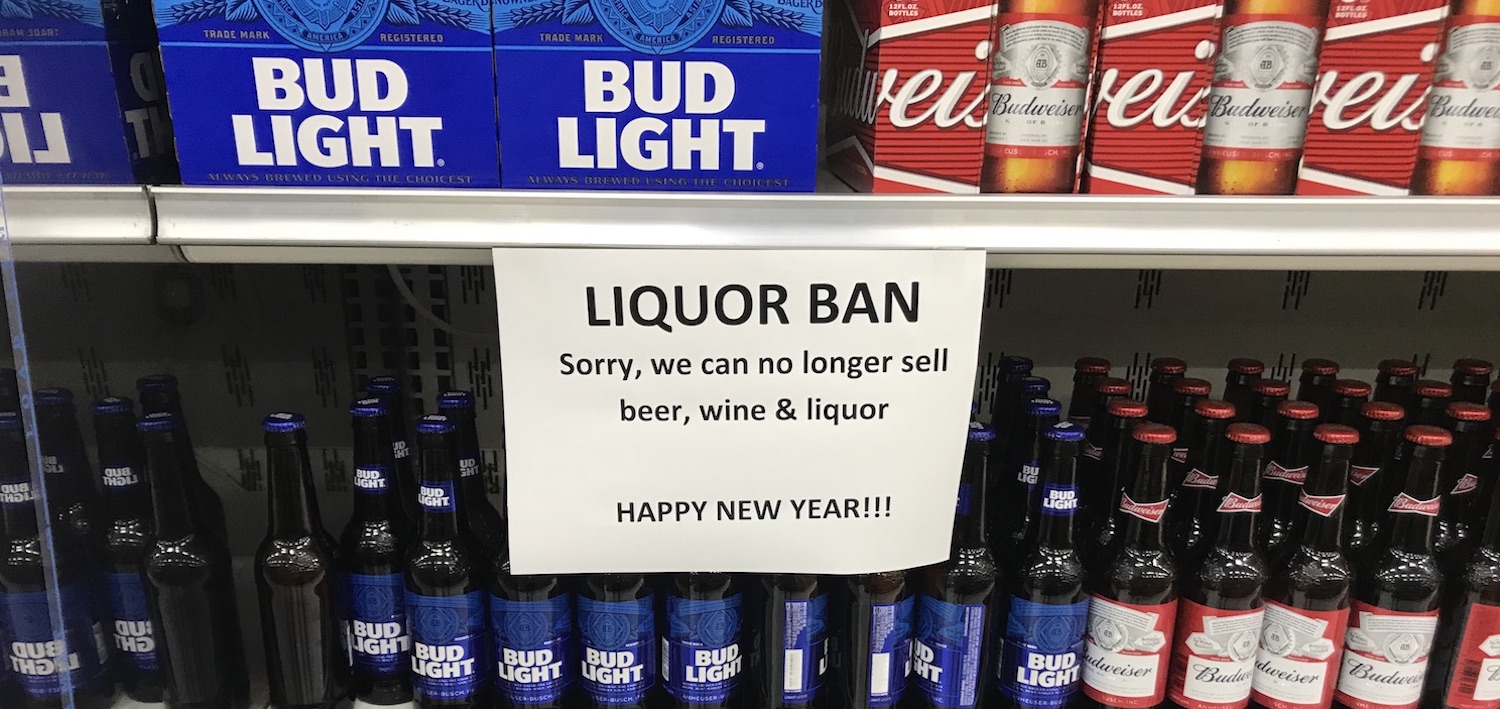
Taxis here are extremely unreliable so the best way to explore the island is by car, which can be rented via your hotel. It takes no more than a day to drive the tarmac road around the perimeter and see all the sights.
Clockwise out of Kolonia it is about 90 minutes to Kepirohi, a village on the south east coast. Just before this there is a general store on the right hand side of the road. Park here, pay $3 each and walk the 500m trail up the hill and through the gardens of a couple of houses to the waterfall where white foam billows over black rock. On an island proud of its many falls, this is by repute the most photographed and indeed it is a lovely setting for a swim and lunch.
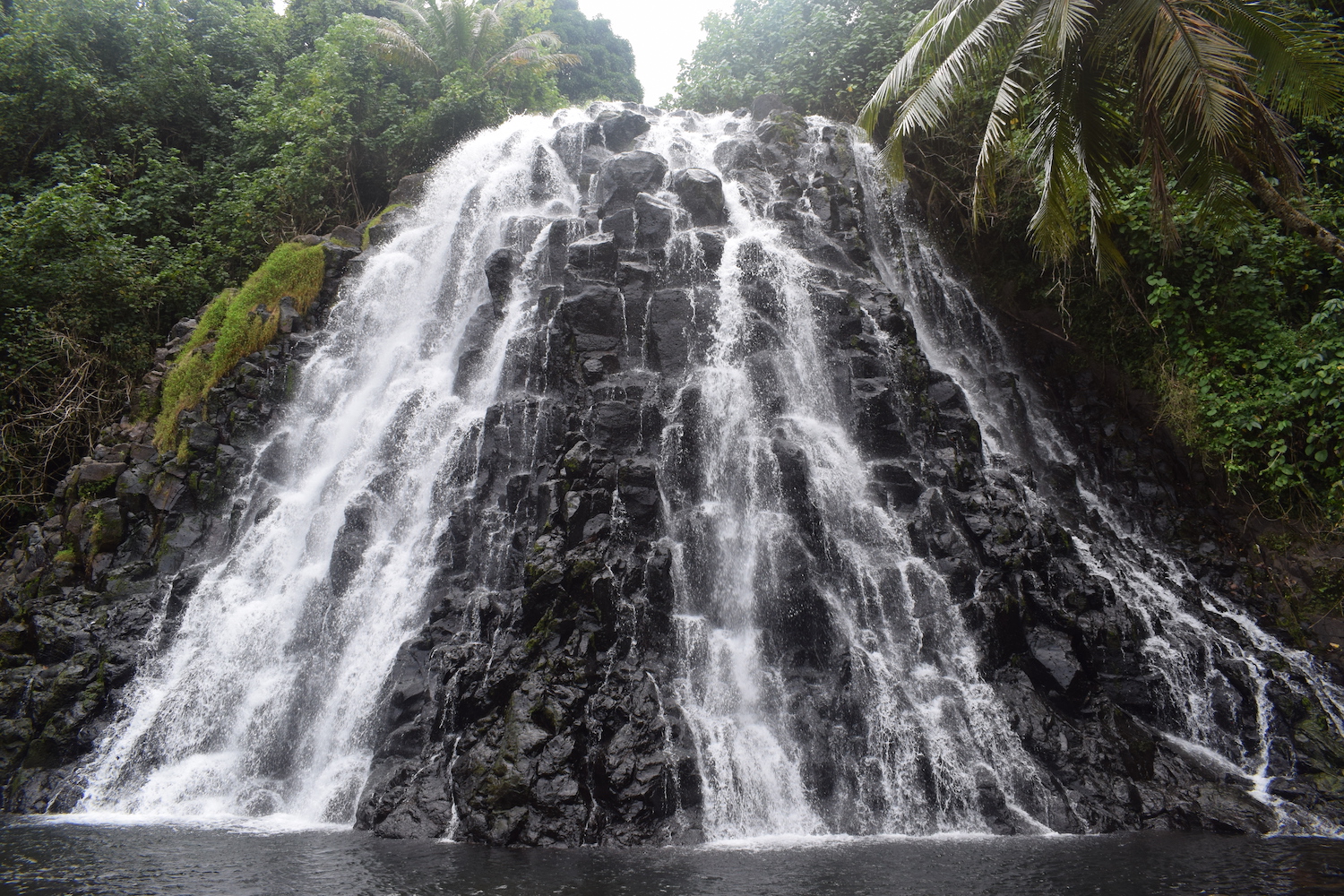
Just a few minutes further along the main road, a turning is clearly marked to Nan Madol. This side road twists and turns through the forest and over a bridge across a lagoon towards Temwen Island. Turn right at the elementary school, then left at the Trail Centre, tracing the bumpy dirt track until you reach what appears to be a family house, replete with the graves of relatives in the garden, typical of the island. Here you pay another $3 each.
This is a gorgeous drive but once you get out of your car and onto your feet it really steps up a gear on an atmospheric hike for about a kilometre into the haunting jungle, full of overgrown forest trees with supporting roots and hanging vines. You tread an ancient path of bits of stone and lumps of coral, through a mangrove swamp beside a series of tiny canals, that is mostly submerged as it is lapped gently by the Pacific Ocean. Often you will get your feet wet; occasionally it will be knee deep. Then there is a wider channel, about 10m, that you have to cross. At low tide you can wade chest high with your camera above your head, but at high tide you have to either swim or wait for a local to appear with a raft. The whole place is a fabulous movie set waiting to happen.
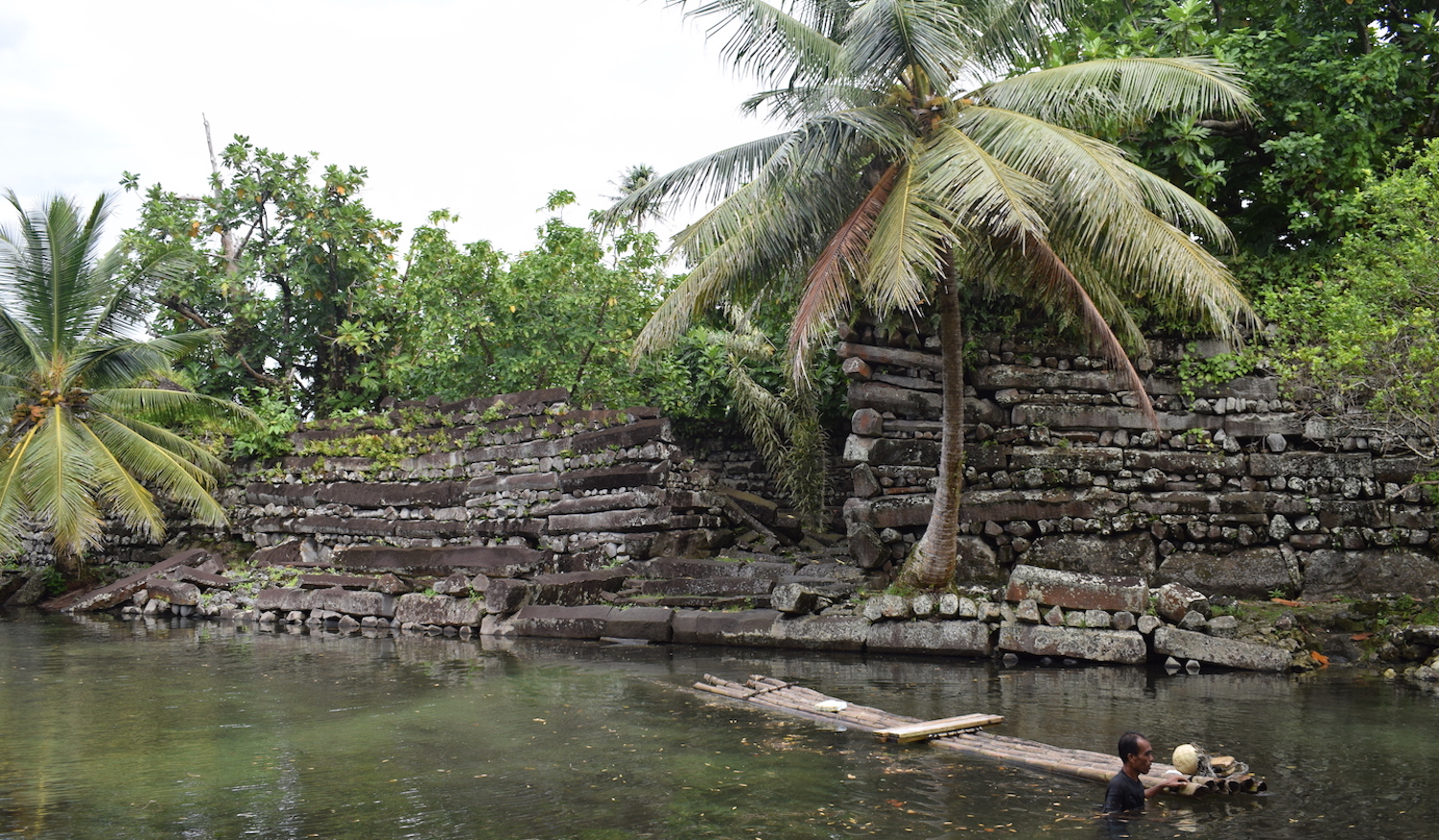
This is Nan Madol. Started in 1180, this series of walled structures on tiny islets was the capital of the Saudeleur Dynasty until 1628. Lost until rediscovered in 1874, the enchanting ruins are now a UNESCO World Heritage Site, by far the most important historic treasure in Micronesia, and an absolute must-see.
Another hour on the main road brings you to the town of Palikir on the north west corner of Pohnpei. Like Brasilia and Canberra, the capital of Micronesia was manufactured overnight, in 1989. This little campus of a dozen or so government buildings is all designed in the same cinnamon architectural style, including the President’s Office and the Congress Chamber.

Just a little further brings you to the most striking view of Pohnpei, Sokehs Rock, pictures of which hang on the walls of local restaurants and hotels.

Chuuk
Chuuk state is home to Truk Lagoon, enclosed in a magnificent globular atoll which you can see clearly from UA154, on the right when arriving and the left when leaving. Inside the coral reef, which loops around for 225km in circumference, are eleven small islands. These barriers form a perfect natural harbour in the middle of the Pacific, making Truk of strategic military significance. It was an important Japanese naval base in the Second World War until two days in February 1944 when the entire fleet was sunk by American warplanes. No wonder that these days it has almost mythological status in the diving community, which turns out to be much deserved, as a “diver’s haven”, as it announces on the local car number plates, and for “the greatest wreck diving in the world”, as it tells you on the welcome sign at the airport. Ran annim.

Make no mistake, Truk Lagoon is simply amazing. It is a gigantic adventure playground for big kids, where for example you can sit in the cockpit of fighter planes deep inside the sunken massive vessels that were transporting them. It is a vibrant fish tank full of aquatic life because the wrecks are now smothered in colourful coral where you will see everything from thousands of juveniles swimming in synch through to the occasional lone octopus. But it is also the graveyard of many Japanese military personnel, and we saw human bones up close down there. All this in 30°C clear blue water with long range visibility and surface intervals at an outrageously beautiful lagoon 8,058 miles from London, usually involving sushi lunches and coconuts knocked down from palms at your request on tropical paradise islands.
The main island is Weno, from where three liveaboards depart, and there are two places to stay, both of which are famed among divers. Truk Stop, owned by an American with his extended family of Chuukese since 1993, is on the north coast, in Weno town just five minutes from the airport, although there is not much around apart from the only ATM in the state. It has a pleasant restaurant and it is easy to relax on the terraces of the corny Man Groove Bar and Hard Wreck Cafe. The only drawback is that several rooms face away from the water.
Blue Lagoon was set up by Kimiuo Aisek, the undisputed founder of diving in Truk. The dive shop dates from 1973 and the resort was added in 1998. It is on the south coast, and although that is just 5km from the town it takes about half an hour by car over a very poor dirt road. The biggest advantages are the peaceful gardens, sculpted with gorgeous palms right to the water’s edge, and every room has a picture book lagoon view from its balcony. The guides have all been working here since the 1990s and the small boats never seem to take more than a handful of people; in fact most days we were diving alone.
US reconnaissance planes spotted a large part of the Japanese war fleet sheltering at anchor in the shallow and calm waters of Truk Lagoon at the end of January 1944. By Operation Hailstone on 17-18 February, many battleships had left, leaving mostly armed merchant ships that were unloading cargo. In all there are fifty-two wrecks, plus submarines and aeroplanes, mostly concentrated in the narrow channel between Fefen and Tonoas islands, just south of Weno.
Almost all the wrecks are at diveable depths, though there is a big adrenaline rush from long penetration and chasing your deco limits as you come up. I am a PADI Staff Instructor with well over 1,000 dives under my weight belt all over the world and I have never seen anything like these before.
The most impressive wreck is the Fujikawa Maru, an aircraft ferry resting upright at 34m, though it is suffering from more than usual corrosion. The holds and superstructure abound with artefacts, and the bow gun is encrusted with bright coral surrounded by thousands of small fish.
There is excellent penetration into the engine room and the galley, with the highlight the partly disassembled aeroplanes in hold two.
The Shinkoku Maru is a massive oil tanker at 38m, and it is easy to enter the bomb hole on the port side that sank it in order to reach the crew quarters. This has been transformed over the years into a magnificent reef community, with halos over halos of juvenile fish, not least around the gun, and brilliant corals covering the propeller.
Listing slightly to port at 36m, the Nippo Maru was loaded with anti-tank guns in hold four.
There is also a magnificent battle tank in hold two.
Other particular favourites of the twenty or so we dived include the Bugh Maru, where thousands of tiny fish are crammed into the bridge so tightly it is not possible to swim through, leaving you to admire them through the port holes; on the Hinu Maru, an auxiliary ship lying on the port side exposing its rudder and propeller, there is vast penetration all the way through the inside; at the Kiyosumi Maru, a massive 137m cargo ship with huge masts smothered in coral, you can swim through the torpedo holes into the engine room where we saw human femur bones; and the Rio De Janeiro Maru, a 10,000-ton cargo ship lying on its starboard side, permits complex penetration along endless corridors into various holds and the engine room.
One of the most talked about is the San Francisco Maru, known as the “million dollar wreck” because it is completely packed with war cargo. It rests perfectly on an even keel, with major damage to the stern, displaying a beautiful bow gun and its greatest attraction, three battle tanks on the main deck. But it is deep, with the shallowest substructure at 48m and the deck at 53m, requiring tech diving.
For our non-diving day we took a taxi on a short land tour of Weno island. High in the hills above the town there is a short cave system dug out by the Japanese, at the end of which is a big gun on a hidden platform with breathtaking views over the harbour and out across the lagoon. On the east coast past the run down church and over the causeway, up a very pot-holed road that took a couple of hours when it should have taken fifteen minutes, is Jesuit Xavier School. Ask to be let up onto the roof for another panorama over the area you have been diving. Just getting gas was a hoot as we pulled up in the teeming rain at an empty looking building only for a guy to come out with a can that he emptied into our tank with a funnel.
All over Micronesia, people had warned us that many Chuukese were known to be troublesome, drunkards and criminals, but we found no evidence of that at all, even though we jogged around Weno several times, including at dusk.
Yap
“Where the hell is Yap?” ask the T-shirts for sale in the Cooperative Association supermarket in the centre of the tiny main town, Colonia. And well they might. UA154 does not come to Yap. Until recently, there were flights from Palau, an hour to the south-west, but now they are only from Guam, an hour to the north-east, with none at all from any other state in the FSM. And they are only twice a week, in the middle of the night. No wonder that tourist numbers, which were never large, have lately fallen off a cliff, cutting the number of diving centres in half.
When you exit the airport it feels like stepping way back in time. As soon as you have your passport stamped at 2 in the morning, you get a local mogethin greeting and a lei garland from a woman in a multi-coloured grass skirt, which sets the tone for your visit.
Yap feels cut off from the rest of the world. To reach the outer islands, some more than 800km away, there is just one monthly service boat, so your best bet is by private yacht. You need the permission in advance of the local chief to land on his island. You can apply via their office in Colonia in what is known as Yap Proper, but in practice the only outsiders ever to visit what are some of the remotest places in the world are academic anthropologists, aid workers like Peace Corps, and Christian missionaries.
Colonia is on the east coast of Yap Proper. It is beautifully situated with enormous untapped potential. There is a small high street parallel to the water with the Cooperative Association amid a row of general stores and two decent restaurants, Ganir and Oasis. Also here is tiny O’Keefe’s Waterfront Inn, plus bar and grill. Next door is the well run Manta Ray Bay Resort & Yap Divers; a wooden sailship permanently moored out front serving as the restaurant is a highly visible landmark; this is the main diving centre on the island.
Up a hill behind is Yap Pacific Hotel. On the opposite side of Chamorro Bay is the Oceana Hotel, with the highest rated restaurant in town, and the Esa Bay View Hotel, both of which share the Beyond The Reef diving centre.
Yap was a German colony until 1918, then Japanese until 1944. It was the Germans who cut a channel across the mangroves to enable boats to take a short east-west route through this idyllic countryside, and it is this that allows divers based in Colonia to access easily all the best sites.
It is just a thirty minute boat ride to the open sea on the north-west side of the island. Just inside the reef, at only 5m, is the Manta Ridge cleaning station that according to PADI Travel is one of the ten best places in the world to dive with these wonderful beasts, soaring like spaceships with up to 7m wing-spans. The promotional materials say you are almost guaranteed to see them every day of the year – though we did have one dive there when we saw diddly-squat – and the best time to come is from December to April when the resident population is swelled by migrants who come to breed.
Very near here is a thrilling experience, even if it is the consequence of an ecologically questionable practice. On top of the Vertigo wall dive, reef sharks assemble in enormous numbers close to the boat on arrival; this is because in the past they have been fed.
Dropping into these infested waters is a rush as the sharks all circle around right up close.
It is about an hour by boat from Colonia to the south coast, where a great wall curves all around the tip of the island. It is easily dived between about 10m and 30m, though the visibility is good enough for you to see the stunning topography as the slope slips away gently into the deep. Here there are healthy hard and soft corals, home to lots of small fish as well as many bumphead parrotfish, napoleons, turtles, and great batteries of barracudas.
There is a unique little dive just off O’Keefe island five minutes from Yap Divers. At dusk you can watch the intimate mating rituals of tiny rainbow-coloured mandarinfish as they come out from hiding in the coral at 5m; males seek out mates, repeatedly getting rebuffed until they finally find a willing female to get it on with for a few seconds.
Yap Proper was long ago carved up between local chiefs whose current representatives meet to decide everything and anything. They are far more powerful than the state or the FSM governments. For example, they insist on exceptionally severe punishments for crimes, including confiscation of property and land, and they prevent the implementation of protection policies against over-fishing.
Virtually every single person you talk to in Yap will have their mouth full and occasionally spit out a red liquid through horribly stained teeth. The floors in the airport have been painted scarlet to stop the stains from showing. This is betel nut. Common across Micronesia, here boys from their teenage years and married women all chew it; it is not permitted for single women. In this subsistence economy where many people sub-let tiny plots of land from their chief, betel nut trees are grown for personal consumption and for export to Guam and to Saipan in the Northern Mariana Islands (you see them loaded into dozens of ice-coolers at the airport on flight nights).
You take the cap off the betelnut, then crack it in half, add drops of lime and a peppermint leaf to make it less bitter. Often tobacco is crushed in too (tobacco for the purpose is grown on the outer islands) though these days it is often just a stripped cigarette (sometimes dipped in vodka to add a kick). Then it is chewed. The juice can be swallowed for a quick rush, but mostly it is spat out in great streams of red phlegm. In my experience, it gives you a purple faced, warm glow, and rotten teeth. William, who works at Yap Divers but is originally from Woleai outer island, explains what it means to him.
Because all the flights are in the early hours, you never get an aerial view of the island covered in trees not just of betel nut but also banana, mango, papaya and pineapple, various kinds of oranges, taro and turmeric, mahogany and palm, plus of course mangroves on the canals and the coasts. Your hotel can hire you a kayak to explore the mangroves close up. At least there is a wonderful helicopter view from the hilltop lookout above Colonia.
Yap Proper is just 24km long and no more than 10km wide and your hotel can arrange a decent land tour for the day of your flight. Although you could hire a car and go it alone, a little tour may be the best option as many of the sights are hard to find without a local guide.
There are several remnants from the Second World War. In the south near the current airport is the old Japanese military runway. There is a Betty bomber and a Nakajima torpedo bomber near to the remains of a Continental Boeing that crashed in 1986.
You might think the villages are so picture-perfect they were put up just for tourists to see, but in fact they are just as they always have been, and there are certainly not enough visitors to warrant such a charade. The males’ houses (which women cannot attend without permission) are near the sea with good views while the females’ houses are at the back (because this is where menstruating women are sent so as not to be seen by anyone else). Outside the community centres there are stone slabs which serve as back rests to citizens with privileged status. Life is much as it has been for centuries, apart from for the few who these days are whisked away on prized scholarships to Chinese universities as part of its growing influence.
It is a rigorously enforced tradition that to enter a village to which you do not belong, locals as well as foreigners, you must carry a hibiscus leaf in hand to act as a white flag to show you come in peace.
A unique phenomenon on Yap Proper is Stone Money. There are 122 villages and each has its own Stone Money Bank, as do many homes. A stone of say 1m diameter can be worth upwards of $1,000 depending on its age and its story: how difficult it was to mine (they are quarried in Palau) and how difficult it was to transport (such as how many people lost their lives along the way). These factors give a value which is then traded like a commodity. In the end it is not so far from gold or cryptocurrencies like bitcoin. Luckily, the stones stay in the bank, available for all to see, less heavily guarded than Fort Knox.
From ancient archaeological sites to stone money still in use today, via awesome reef and wreck diving, on some of the prettiest land in the world, the Federated States of Micronesia will ignite the flames of anyone who draws near. Little heard of, rarely visited, this is my idea of a good time.
